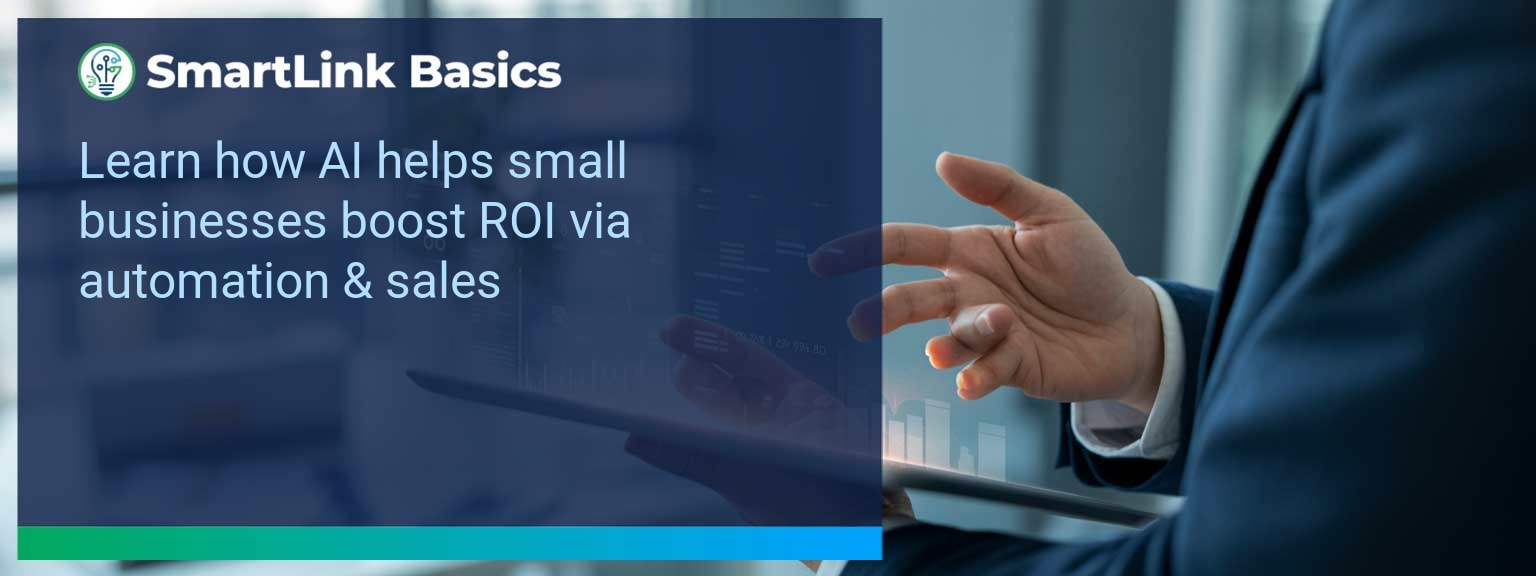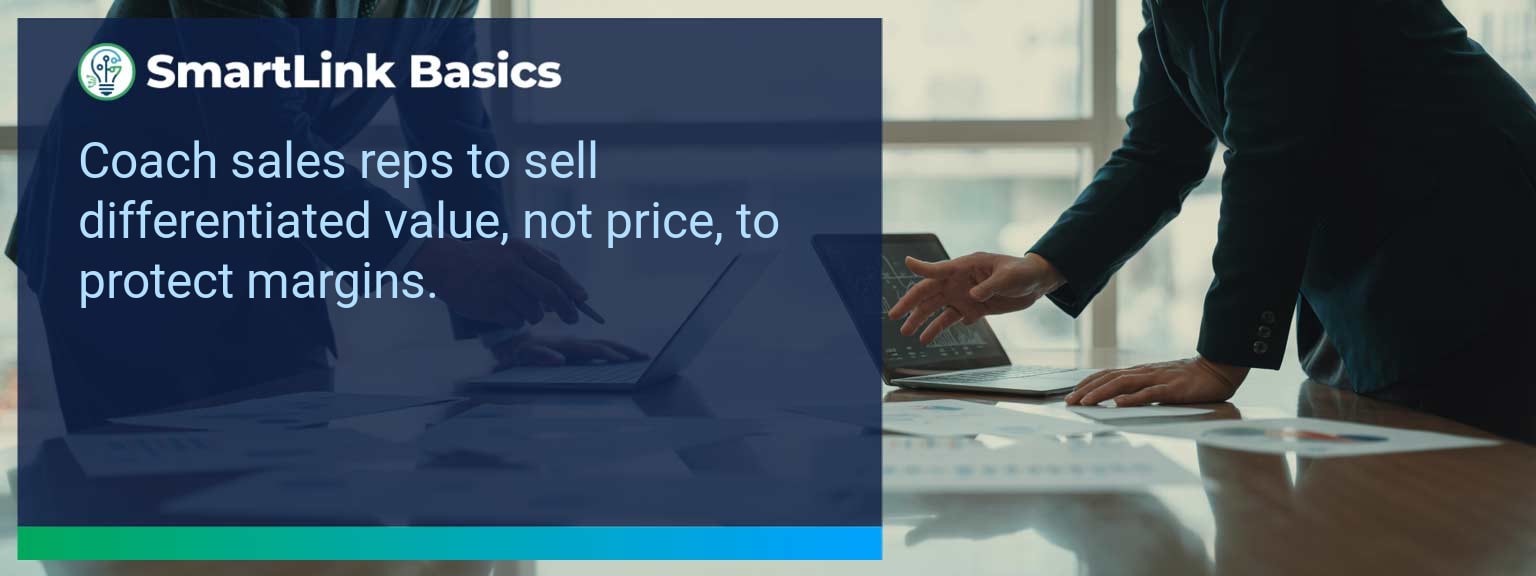AI spending is skyrocketing, with IDC forecasting corporate investments to hit $61.9 billion in 2025. Yet, McKinsey reports that nearly 8 in 10 companies see no measurable bottom-line impact. This disconnect is where smaller companies can gain an edge. At SmartLink Basics, we believe that AI for small business is less about hype and more about precision deployment where it matters most. In this article, we’ll explore why many organizations struggle with AI, how SMBs can leverage agility to unlock ROI, and the high-impact areas where immediate results are achievable. By the end, you’ll have a roadmap to identify one process this month to optimize with AI and measure the impact.
- Most AI pilots fail because of poor integration and weak ROI tracking.
- SMBs can move faster, with lean adoption strategies beating enterprise bureaucracy.
- High-impact AI use cases include customer service, sales automation, and workflow integration.
- Adopt off-the-shelf AI tools before heavy customization to test ROI.
- Measure impact with KPIs such as hours saved, response speed, and revenue growth.
The Barriers To AI ROI
AI adoption is often compared to the “productivity paradox” of the 1980s, when personal computers were everywhere but productivity gains lagged. McKinsey found that while 80% of companies used generative AI in 2024, the majority reported no measurable financial benefit. This gap between cost and outcome has made many decision-makers hesitant.
High abandonment rates are also a growing trend. According to S&P Global, 42% of firms abandoned most of their AI pilots in 2024, compared with just 17% the year before. Failures stem from technical limitations, “hallucinations” in AI output, and the inability to integrate tools into daily sales and operations workflows.
Culture and change management add another barrier. Teams resist when AI feels imposed, or when leadership fails to provide retraining. Without gradual trust-building and AI literacy, even the best tools stall. Finally, Gartner projects AI is on track to enter the “trough of disillusionment” by 2026, meaning companies must pivot from hype-driven to impact-focused adoption strategies.
How SMBs Can Leverage AI For Impact
Unlike large enterprises burdened by bureaucracy, SMBs can adopt AI with agility. With fewer approval layers, smaller teams can run controlled pilots, pivot quickly, and adopt tools that deliver performance analytics faster.
Clear alignment with business priorities is another SMB advantage. For example, instead of spreading investments across 10 functions, small firms can focus on automating high-friction workflows that unlock immediate ROI. This could mean deploying AI for CRM optimization to reduce sales admin workload or launching customer-facing chatbots that resolve 30% of tickets without agent intervention.
SMBs also face less legacy drag. Digital transformation is faster when teams aren’t tied to decades of IT complexity, making AI adoption for SMBs both more affordable and scalable.
Real-World Wins For Lean Organizations
Examples of high-impact AI for small business are already emerging. USAA deploys AI that supports 16,000 call-center reps managing 200,000 daily calls, improving both knowledge retrieval and customer experience. A smaller firm can replicate this with off-the-shelf AI chatbots and intelligent FAQs.
In field services, Johnson Controls cut 10–15 minutes per job by generating repair summaries, reducing downtime. For SMBs, AI-powered service checklists or customer-ready service notes save time and enhance trust.
Sales automation also presents significant upside. With AI generating prospect briefs, customizing outreach, and summarizing meeting notes, SMBs unlock selling time that was once consumed by manual admin. These actions directly accelerate revenue operations in a resource-friendly way.
Building A Smarter AI-Ready Culture
The future of AI in lean businesses rests on culture as much as technology. Leaders must frame AI as a co-pilot that enhances human performance, especially in customer-facing roles where trust is critical.
Building AI literacy across all departments, not just IT, is essential. Simple prompt engineering training and exposure to tools ensure adoption success. Celebrating early wins in sales automation or workflow integration builds momentum that spreads throughout the company.
By approaching adoption as iterative, SMBs avoid the pitfalls of over-engineered deployments, instead scaling proven solutions step by step.
| Category | Metric | Definition | Target |
|---|---|---|---|
| Leading | AI-Assisted Task Adoption | % of repetitive manual tasks transitioned to AI tools | 50% in 90 days |
| Leading | Response Time Reduction | Average % decrease in customer response resolution time | 20%+ |
| Lagging | Revenue Lift from AI | Incremental revenue generated from AI-assisted workflows | 10–15% growth |
| Lagging | Lead Conversion Rate | % of AI-augmented leads converted to customers | 30%+ |
| Quality | Agent Confidence Index | Survey scores from staff on AI reliability in workflows | 80% favorable |
| Quality | Customer Satisfaction Score | Feedback rating on AI-enabled customer service experiences | +15% uplift |
Get the 90-day plan, coaching rubric, and dashboard template to operationalize AI in your enablement program.
Turning AI From Experiment To Competitive Edge
AI for small business is most powerful when it focuses on solving one high-friction problem at a time. By targeting workflows with measurable ROI, SMBs can avoid stalled pilots and wasted investment. The companies that succeed will combine fast execution, KPI-driven measurement, and team-wide adoption. For next steps, explore more AI-driven sales enablement resources from SmartLink Basics to accelerate your adoption strategy.









